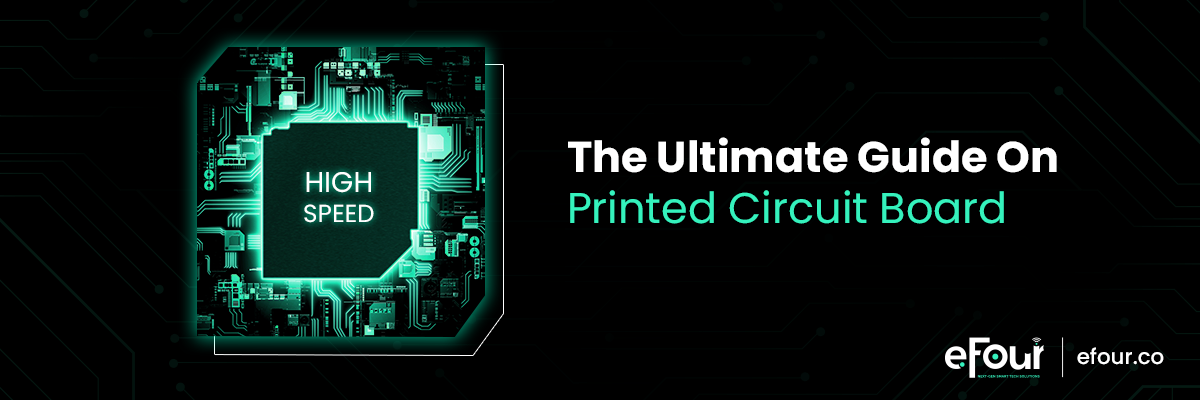
Electronic devices are part of our day-to-day lives. Whether we talk about the smartphone, camera or laptop – all these devices have a printed circuit board as the base. Over a couple of years, the manufacturing of circuit boards has seen a tremendous rise.
Now, to get a little brief understanding of a high-speed PCB design, one must explore the inside of an electronic device. If it is working at a high frequency, then the chances of its PCB being high-speed is more likely.
While designing such a high-speed PCB, there are countless elements and boundaries that must be chosen definitively to ensure that the design will work in the first go.
The high-frequency PCB design guidelines can help designers figure out this region. And to keep things clear, it is an absolute necessity that when you’re designing a high-speed PCB, there are certain criterias and measurements to be met in order to make sure that the design will evidently work.
In this high-speed PCB design guide, we will encapsulate the high-speed PCB layout techniques, high-speed layout guidelines to help designers.
What Is High-speed Board Design?
As the name suggests, a high-speed board design is specifically designed to transmit the signals at a much faster speed. This does create scad of opportunities for designers and engineers, allowing them to use the most innovative and fast electric equipment. With this high-speed design guide, everything will be cleared.
A high-speed design utilizes high-grade PCB materials with tight fiber interwinding and close tolerances and controlled impedance.
High-speed designs would likewise attempt to utilize little packages like BGA, LGA, MSOP, and so forth, rather than bigger parcels and other high-speed
When Is A Printed Circuit Board Design Considered High-Speed?
You might wonder if your devices are working at lower frequencies, your board isn’t high-speed; this is not true. When we talk about any PCB where the characteristic of the signals is being affected by the PCB layout is considered a high-speed PCB. Worry not and read on as this ultimate high-speed PCB design guide will help you figure out what you’re looking for. Any PCB where the nature of your signals is being impacted by the PCB layout is a high-speed board design.
You decide this by checking how much time it takes for a chip to change a digital signal from the ‘off’ to the ‘on’ state. Normally, assuming the signal heartbeat rise time is ‘little’ contrasted with the time it takes for the signal heartbeat to propagate (for example ½ of the all-out time the signal takes to go along the trace) then you want to think about your PCB as a high-speed circuit because the whole signal heartbeat will appear on that trace before hitting the finish of the trace. So, going by this high-speed PCB design guidelines this is how you know that a PCB transmits at a high-speed rate.
High-Speed PCB Design Rules & Challenges
The cautious design of a PDN in a high-speed circuit board is fundamental for the board’s definitive electrical exhibition. Without a make return way for the signals, the block might end up making a great deal of clamor that might make bogus signaling and upset the typical activity of the circuits. It can likewise prompt other signal trustworthiness issues, for example, EMI and ground bob. Those signal returns that can’t find a make return way on the reference plane might wind up coupling to any return way they can find, including different traces. This accidental coupling will make well-known mode energy, which could emanate out and produce extra commotion. To keep away from these issues, here are some PDN design proposals to help.
Utilize One Continuous Ground Plane and Do Not Split It
Be Careful of Circuit Board Features That Can Block the Ground Plane
Huge Pin-Count High-Density Components With Multiple Power Connections
Tips For High-speed PCB Design
With the high-speed PCB design guide, the following are the tips to be followed to get the high-speed PCB.
1. Record Every Detail of Your Board Stackup for Manufacturing
To work off of the arranging stage in Tip 1, it’s currently time to characterize and record your layer stack-up necessities completely. This is an ideal chance to get along with your maker to figure out what materials of your board, and what explicit limitations you want to include in your design rules.
2. Floor Planning – Organize Your Board Into Logical Sections
As per arranging out your high-speed design necessities and your layer stack up, you additionally need to consider how your board will be coordinated. Recall above when we discussed how high-speed design can be grouped in light of an assortment of sub-circuits. You’ll have to conclude where these sub-circuits are put inside the bigger design.
3. Keep the Size of Your Land Patterns at a Minimum
Any PCB design you’ve chipped away at in the past has likely had bigger cushions than was needed. This was finished with clear reasons. It makes it more straightforward to fit a binding iron on the cushion, assessments are speedier, and component situation accuracy turns out to be less of an issue.
Final Thoughts
To put it succinctly, this high-speed PCB design guide is your go-to guide to understanding the high-speed PCB development techniques, high-speed PCB layout techniques, etc. There are more high-frequency PCB design guidelines for high-speed than what is written here, yet this article ought to give you a decent beginning on your next high-speed PCB design project. Additionally, make sure to utilize the capacities of your CAD devices to their fullest. Notwithstanding the design decisions and limitations that we’ve previously discussed, PCB design apparatuses have numerous different highlights that can help you. For example, Cadence apparatuses have different circuit recreation and design investigation instruments accessible for specialists to find and address design issues before a board is constructed.
If you’re looking High-Speed PCB design solution for you, talk to us our expert team.



